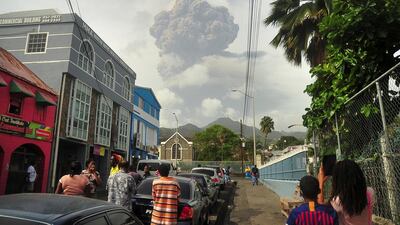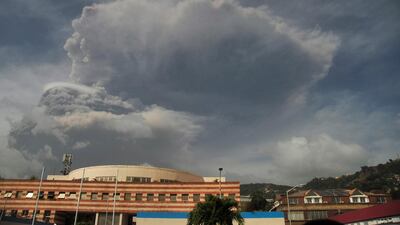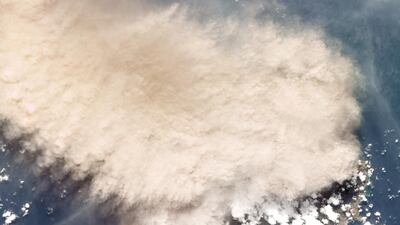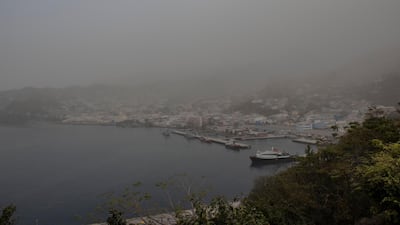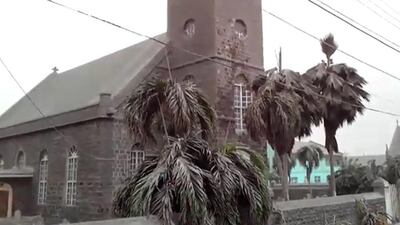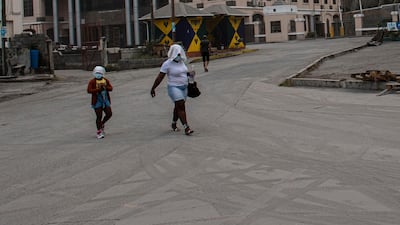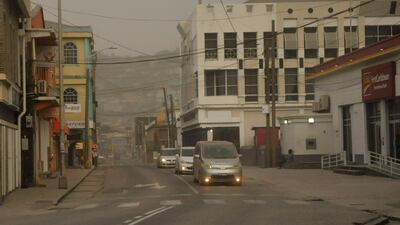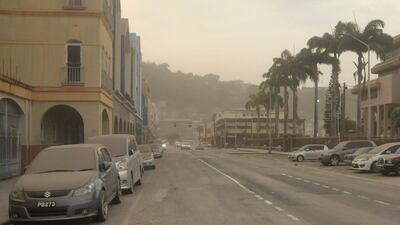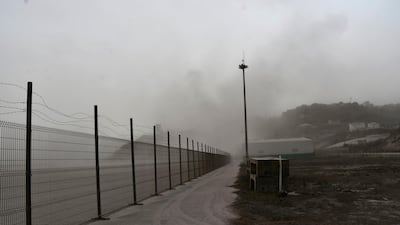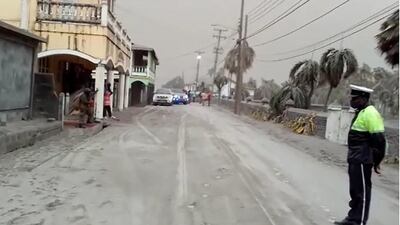Ash covered much of the Caribbean island of St Vincent on Saturday, and the stench of sulphur filled the air after a series of eruptions from a volcano that had been quiet for decades.
The thick dust was also on the move, travelling 175 kilometres to the east and starting to affect the neighbouring island of Barbados.
"Barbadians have been urged to stay indoors as thick plumes of volcanic ash move through the atmosphere," the Caribbean Disaster Emergency Management Agency said.
The whitish powder caked roads, homes and buildings in St Vincent after the powerful blasts from the La Soufriere volcano that began on Friday.
Visibility in some areas was extremely limited, while in the capital city Kingstown on the south of the island – the volcano is in the north – the ash caused a thin haze of dust, the portal said.
"Vincentians are waking up to extremely heavy ash fall and strong sulphur smells which have now advanced to the capital," the local emergency management agency tweeted.
The eruptions prompted thousands of people to flee to safety. Around 16,000 people live in areas under evacuation orders.
Prime Minister Ralph Gonsalves said on Saturday that water had been cut off in most areas and the country's air space was closed because of the ash. Around 3,000 people spent the night in shelters.
"It's a huge operation that is facing us," Mr Gonsalves told NBC News.
He said his government had been in contact with other countries that wanted to provide aid. Guyana and Venezuela were sending ships with supplies, Mr Gonsalves said.
The initial blast from La Soufriere, the highest peak in St Vincent and the Grenadines, sent plumes of hot ash and smoke 6,000 metres into the air on Friday morning.
A second, smaller eruption took place on Friday afternoon, belching out a 4,000-metre ash cloud, the University of the West Indies Seismic Research Centre said.
The centre's director, Erouscilla Joseph, said late Saturday that there had been "additional explosions" throughout the day which had been accompanied by more ash.
"Unfortunately, we believe that more seismic unrest will be expected overnight," she added.
The 1,235-metre La Soufriere – the name is French for "sulphur mine" – had not erupted since 1979, and its largest eruption happened over a century ago, killing more than 1,000 people in 1902.
It had been rumbling for months before it finally blew.
"We are trying to be OK. It's deathly quiet outside and the mood is pensive," said Vynette Frederick, 44, a lawyer in Kingstown.
North-west of Kingstown on the 30-kilometre island, Zen Punnett said things had calmed down after the initial panic as evacuation orders went out on Thursday night.
"It's gotten hazier. We are staying inside," she said.
The emergency management agency posted photos of a Coast Guard ship evacuating residents who had previously refused to leave. Standing on a dock, the air above the evacuees was a chalky gray.
Most of the people in the red zone had been moved to safety by Friday, authorities said.
Cruise ships were on the way to assist the evacuation effort.
